Below are some recent photographs of sycamore trees (Platanus occidentalis) in limestone bedrock at Herrington Lake, Kentucky (about37.78o N, 84.71o W). As you can see, the tree roots and trunks exploit joints in the rock, and accelerate weathering both by physically displacing limestone slabs and widening joints by root growth, and by facilitating biochemical weathering along both live and dead roots.
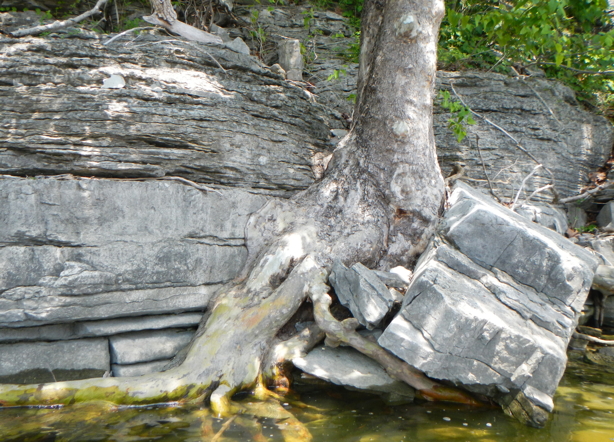
These are some nice examples of root/bedrock interaction, and the general phenomena are not uncommon, though usually much more difficult to see. The Herrington Lake shores also appear to illustrate a process by which the sycamores accelerate weathering and mass movements (other trees are also involved, but Platanus occidentalis seems to be the most common and effective):
1. Plants colonize the exposed bedrock, with roots exploiting bedrock joints.
2. Tree roots accelerate weathering and loosen joint blocks.
3. While the tree is still alive, root growth envelopes rock fragments and the trees provide a physical barrier to downslope transport.
4. When the tree dies, the rock fragments are released downslope.
Field evidence of all these steps is rather obvious and abundant. However, it remains to be demonstrated that the sycamores and related trees result in faster weathering and hillslope degradation than would otherwise occur.
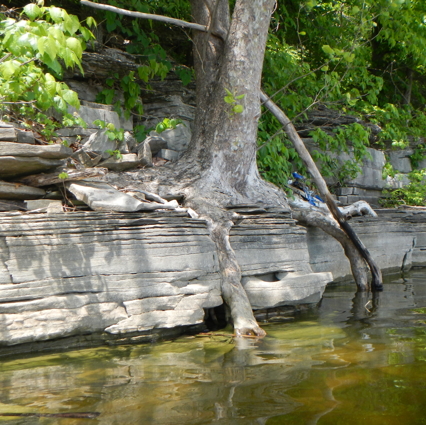
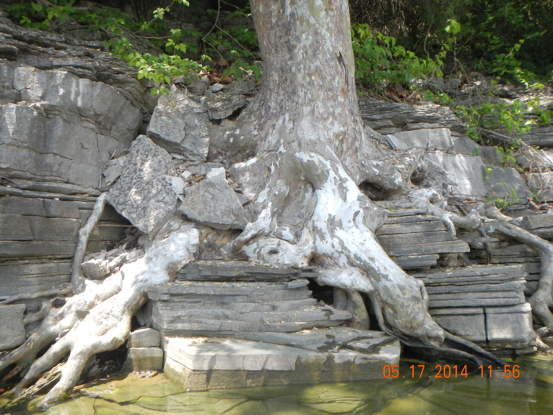
Herrington Lake was formed by damming (in the 1920s) the Dix River gorge. As a deep, steep-sided, bedrock controlled gorge, the lakeside hillslopes are characterized by exposed bedrock and thin soils. The creation of the lake may have provided an unusual opportunity for Platanus occidentalis colonization. Sycamores are highly shade intolerant and require direct sunlight for establishment. The lake setting provides that. The tree also requires moist conditions (it is quite common on river banks and in bottomlands in the region). The presence of the lake ensures that along the lower slopes, roots penetrating joints will soon encounter water. Finally, sycamore is native to the region (though usually more scattered than is the case along Herrington Lake) along streams, and seeds are dispersed by water (as well as wind). Thus the Dix River and other lake tributaries provided a seed source.
Beyond being a good example of root-rock interactions that are important in weathering, pedogenesis, and forest geomorphology, the Herrington Lake sycamores raise two other interesting issues:
1. The role of vegetation in destabilizing rather than stabilizing hillslopes. This has been noted before in other contexts, but usually with respect to hydrological rather than rock weathering effects.
2. The role of relatively benign (compared to say, deforestation or alien invasive species) ecological change in producing profound geomorphic change.
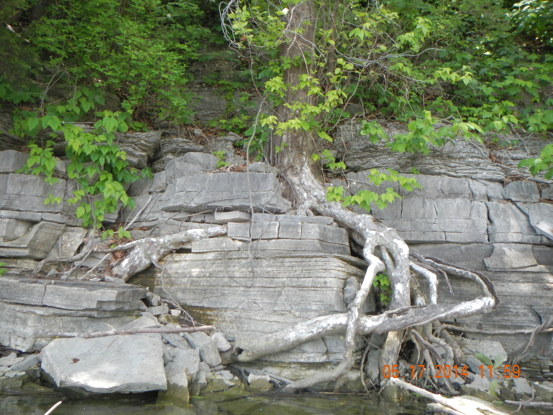
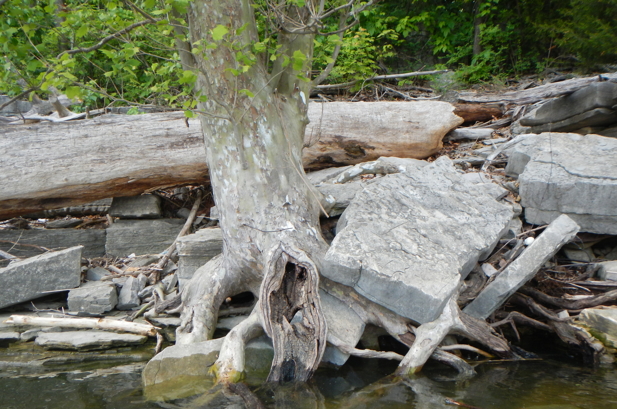

Information about Platanus occidentalis was taken from: Sullivan, Janet. 1994. Platanus occidentalis. In: Fire Effects Information System, U.S. Department of Agriculture, Forest Service, Rocky Mountain Research Station, Fire Sciences Laboratory. Available: http://www.fs.fed.us/database/feis/ [2014, June 4].
My own published work on tree root effects includes:
Phillips, J.D., Marion, D.A., Turkington, A.V. 2008. Pedologic and geomorphic impacts of a tornado blowdown event in a mixed pine-hardwood forest. Catena 75: 278-287.
Phillips, J.D., Turkington, A.V., Marion, D.A. 2008. Weathering and vegetation effects in early stages of soil formation. Catena 72: 21-28.
Phillips, J.D. 2008. Soil system modeling and generation of field hypotheses. Geoderma 145: 419-425.
This will soon be greatly expanded upon by Michael Shouse’s PhD dissertation (University of Kentucky), which will become available later this summer.
